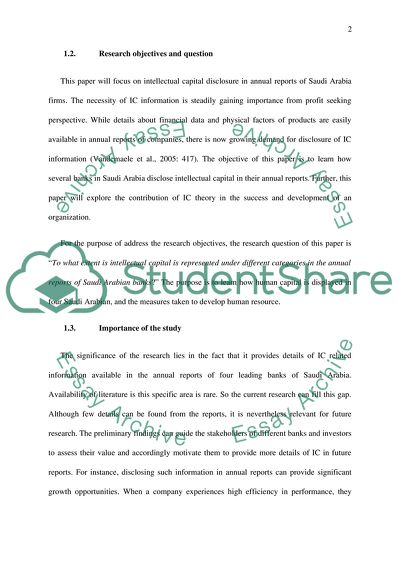Cite this document
(“AN INVESTIGATION OF INTELLECTUAL CAPITAL DISCLOSURE IN ANNUAL REPORTS Research Proposal”, n.d.)
AN INVESTIGATION OF INTELLECTUAL CAPITAL DISCLOSURE IN ANNUAL REPORTS Research Proposal. Retrieved from https://studentshare.org/finance-accounting/1655411-an-investigation-of-intellectual-capital-disclosure-in-annual-reports-of-saudi-arabia-firms
AN INVESTIGATION OF INTELLECTUAL CAPITAL DISCLOSURE IN ANNUAL REPORTS Research Proposal. Retrieved from https://studentshare.org/finance-accounting/1655411-an-investigation-of-intellectual-capital-disclosure-in-annual-reports-of-saudi-arabia-firms
(AN INVESTIGATION OF INTELLECTUAL CAPITAL DISCLOSURE IN ANNUAL REPORTS Research Proposal)
AN INVESTIGATION OF INTELLECTUAL CAPITAL DISCLOSURE IN ANNUAL REPORTS Research Proposal. https://studentshare.org/finance-accounting/1655411-an-investigation-of-intellectual-capital-disclosure-in-annual-reports-of-saudi-arabia-firms.
AN INVESTIGATION OF INTELLECTUAL CAPITAL DISCLOSURE IN ANNUAL REPORTS Research Proposal. https://studentshare.org/finance-accounting/1655411-an-investigation-of-intellectual-capital-disclosure-in-annual-reports-of-saudi-arabia-firms.
“AN INVESTIGATION OF INTELLECTUAL CAPITAL DISCLOSURE IN ANNUAL REPORTS Research Proposal”, n.d. https://studentshare.org/finance-accounting/1655411-an-investigation-of-intellectual-capital-disclosure-in-annual-reports-of-saudi-arabia-firms.


